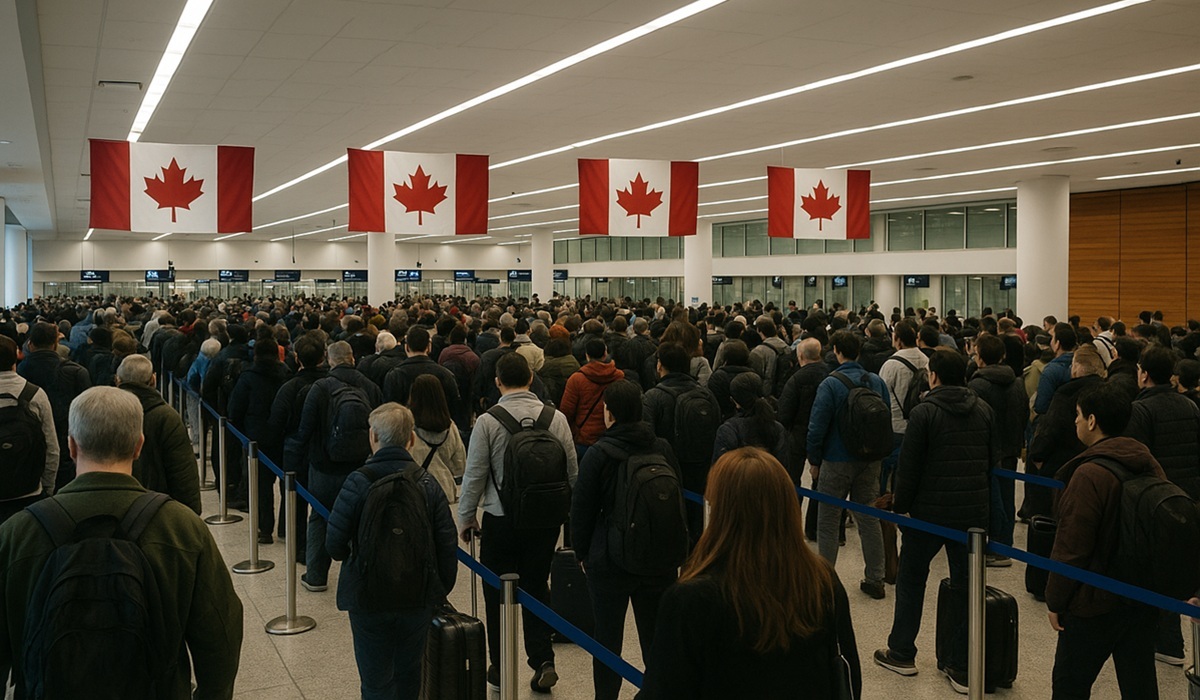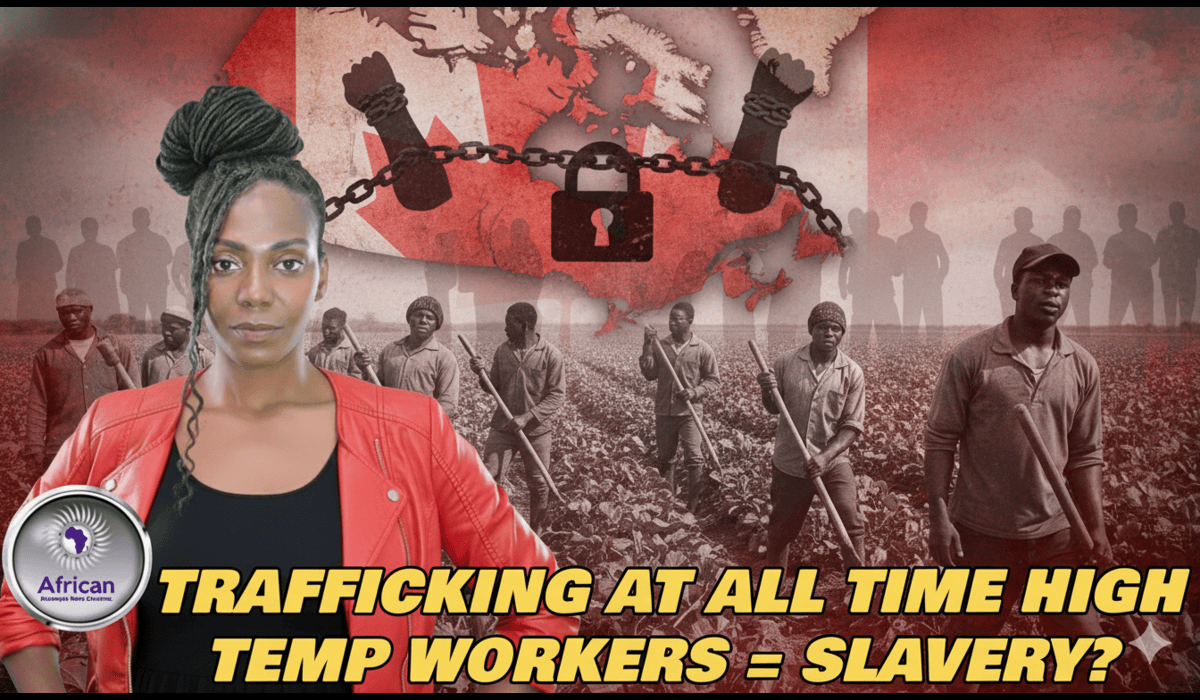Canada’s Silent Immigration Freeze: The Decade-Long Wait That Speaks Volumes
- Ingrid Jones
- Canada
- October 22, 2025

Canada’s immigration system, once admired for its fairness and speed, has quietly evolved into a decade-long labyrinth that discourages newcomers before they even arrive. What was once a process of a few years has now turned into a ten-year minimum wait for permanent residency. The government blames staffing shortages, outdated systems, and lingering pandemic backlogs—but behind the polite explanations lies a deliberate, policy-driven slowdown. It’s not chaos; it’s control. And if history is any indication, Ottawa knows exactly what it’s doing.
Canada has been here before. In 2012, under the authority of Bill C-38 and later reinforced by Bill C-12, the federal government granted itself unprecedented power to terminate immigration applications en masse. That year, more than 280,000 federal skilled worker applications—some submitted as far back as 2004—were wiped out with the stroke of a pen. Lives were upended overnight. Families who had waited years, paid fees, completed language exams, and made financial and personal plans to move to Canada found their dreams nullified by legislation. They were refunded their application fees, but not their years of waiting, their lost opportunities, or their trust.
That episode serves as a grim reminder of how easily the government can pull the plug on immigration pathways, regardless of promises or timelines. And now, more than a decade later, it feels as though history is repeating itself—this time not through sudden cancellation, but through a slow-motion freeze. With processing times stretching beyond ten years, the effect is the same: a deterrent masked as delay.
Ottawa insists the delays are bureaucratic and unavoidable. Yet, for a government that runs on data and optics, it’s hard to imagine these backlogs are accidental. The timing coincides with growing domestic backlash over housing affordability, overstressed healthcare systems, and the perception that too many immigrants are arriving too quickly. Canadians are increasingly voicing frustration that infrastructure, wages, and public services can’t keep pace with population growth. Rather than risk the political fallout of openly restricting immigration, the government has found a subtler method: slow everything down until people stop applying.
It’s a bureaucratic masterpiece of deterrence. No announcements, no debates, no controversy—just a quietly expanding timeline that achieves the same outcome as a cap. A family in Manila or Lagos looking to immigrate to Canada now sees a decade-long wait and understandably looks elsewhere. Employers who depend on skilled workers are forced to adjust. International students who once saw Canada as a pathway to permanent residency are left in a fog of uncertainty. And for the thousands already in the system, waiting years just to have their files reviewed, the anxiety is crushing.
The parallels to 2012 are chilling. Back then, it was abrupt and merciless—tens of thousands of applicants gone overnight. Today, it’s gradual but equally devastating. Applicants now whisper among themselves about the possibility of history repeating—of another legislative maneuver that could cancel files outright, especially if the government deems the backlog “unmanageable.” And legally, under Bill C-12’s expanded powers, it can. The same framework that allowed Ottawa to terminate applications in 2012 still exists today, meaning the government could again erase years of waiting with no recourse for those affected.
This has created a new psychological barrier. Immigrants no longer just worry about delays; they fear disappearance. They worry their applications might one day vanish into the ether of legislative convenience. It’s not just an administrative process anymore—it’s a gamble, one where time, money, and hope are all on the line.
What’s happening now, quietly, is a policy of attrition. The longer the government drags its feet, the fewer people will want to go through it. Canada’s immigration department, Immigration, Refugees and Citizenship Canada (IRCC), continues to speak in optimistic tones about welcoming newcomers, meeting quotas, and diversity. But the numbers tell a different story. Backlogs continue to grow. Wait times expand. And even as annual targets are announced, the real throughput—the number of people who actually make it through the system—stagnates.
For those already in the queue, the wait is more than an inconvenience; it’s a life on hold. Families remain divided across continents. Children grow up without parents. Workers in Canada struggle under temporary permits that must be renewed again and again. Employers lose faith in the system. The promise of stability—the very essence of immigration—is replaced by years of uncertainty. And should another government decide to “reset” the system again, as it did in 2012, those years could evaporate overnight.
Supporters of the current approach argue that Canada must manage its intake responsibly. They say the strain on housing, healthcare, and social services makes it impossible to sustain past levels of immigration. They’re not wrong about the pressure—but transparency matters. If the government intends to pause or slow immigration, it should say so directly. Instead, it hides behind the language of inefficiency while using legislation like Bill C-12 as a quiet threat. The message is clear: we’re not saying “no,” but we’re making it nearly impossible to say “yes.”
The implications for Canada’s reputation are profound. For decades, the country was seen as the world’s gold standard for fair, transparent immigration. That reputation helped attract not just workers, but innovators, entrepreneurs, and entire families who contributed to the nation’s prosperity. Now, as news spreads about decade-long waits and the government’s authority to erase applications, confidence in the system is collapsing. Skilled professionals are choosing Australia, Germany, or the United Kingdom—countries where the process, though strict, is at least predictable.
Economically, the policy is self-defeating. Canada faces critical shortages in construction, healthcare, and technology—industries crying out for skilled immigrants. Yet thousands of qualified individuals remain locked out by red tape. Meanwhile, businesses falter, public projects stall, and taxpayers bear the cost of inefficiency. The irony is painful: a nation built on immigration is quietly sabotaging its future under the guise of management.
The immigration slowdown, intentional or not, reflects a deeper truth about Canada’s current political climate. It’s risk-averse, cautious, and increasingly populist. Immigration is no longer seen as an engine of growth but as a source of strain—a problem to be managed rather than a promise to be kept. Bill C-12 and its legacy of cancellation hang over the system like a shadow, reminding everyone—immigrants and Canadians alike—that no queue is sacred and no application is safe from the stroke of a pen.
Whether this approach is good or bad depends on your vantage point. For some, it’s necessary course correction; for others, it’s a betrayal of Canadian ideals. But one fact is beyond dispute: Canada’s immigration system has become a quiet gatekeeper of deterrence. It doesn’t slam the door—it simply leaves you waiting outside until you give up.








